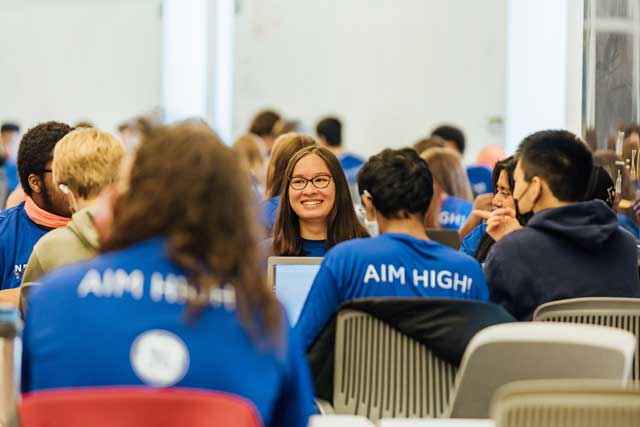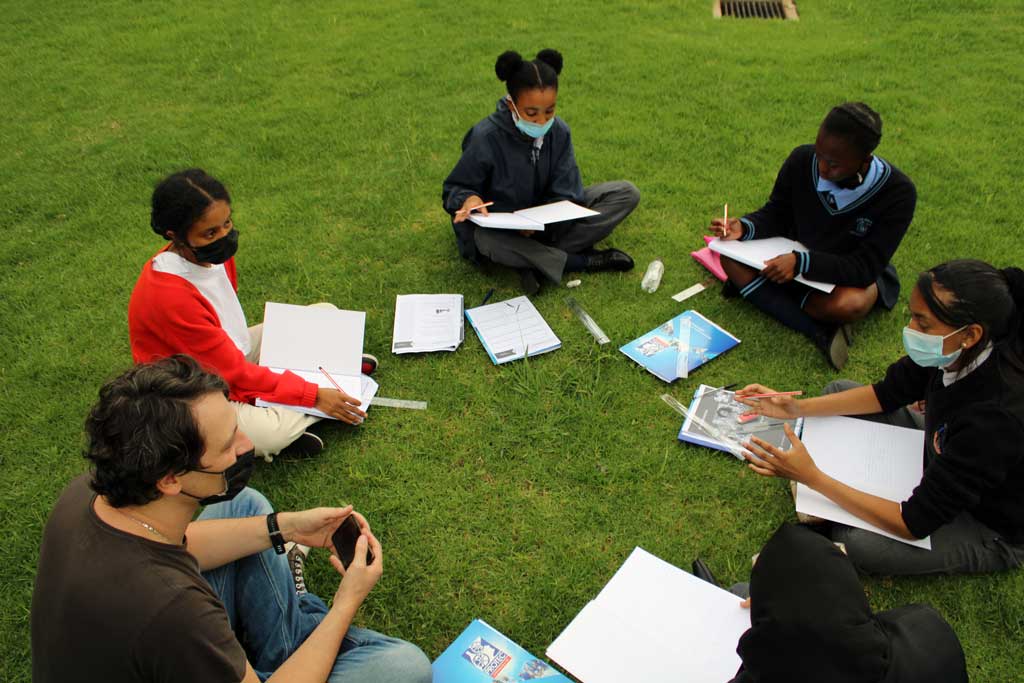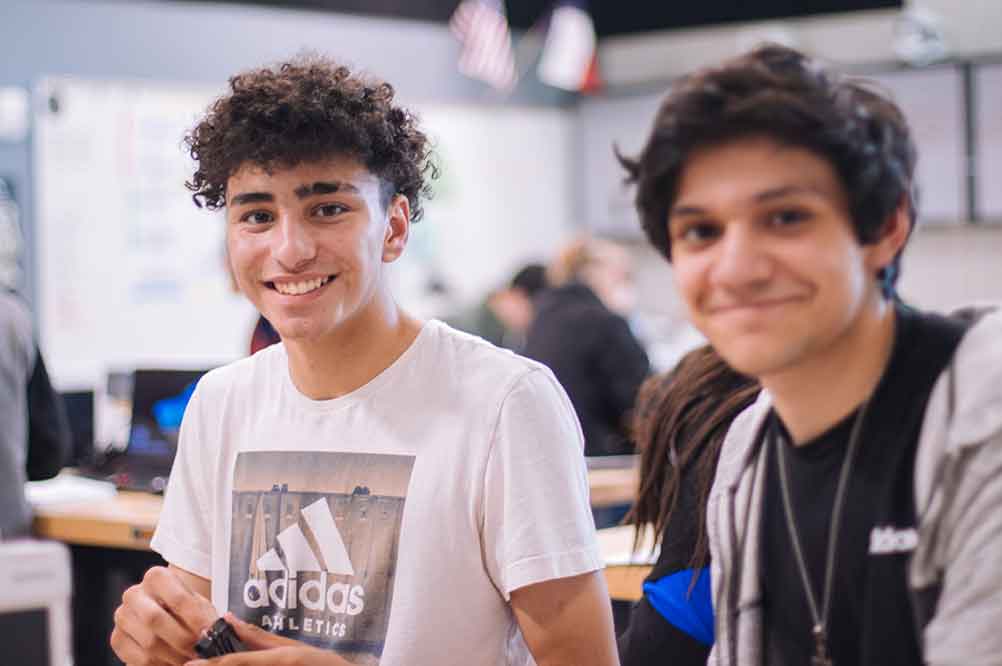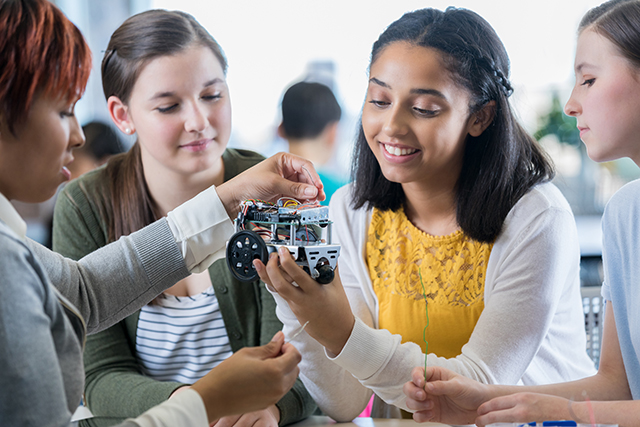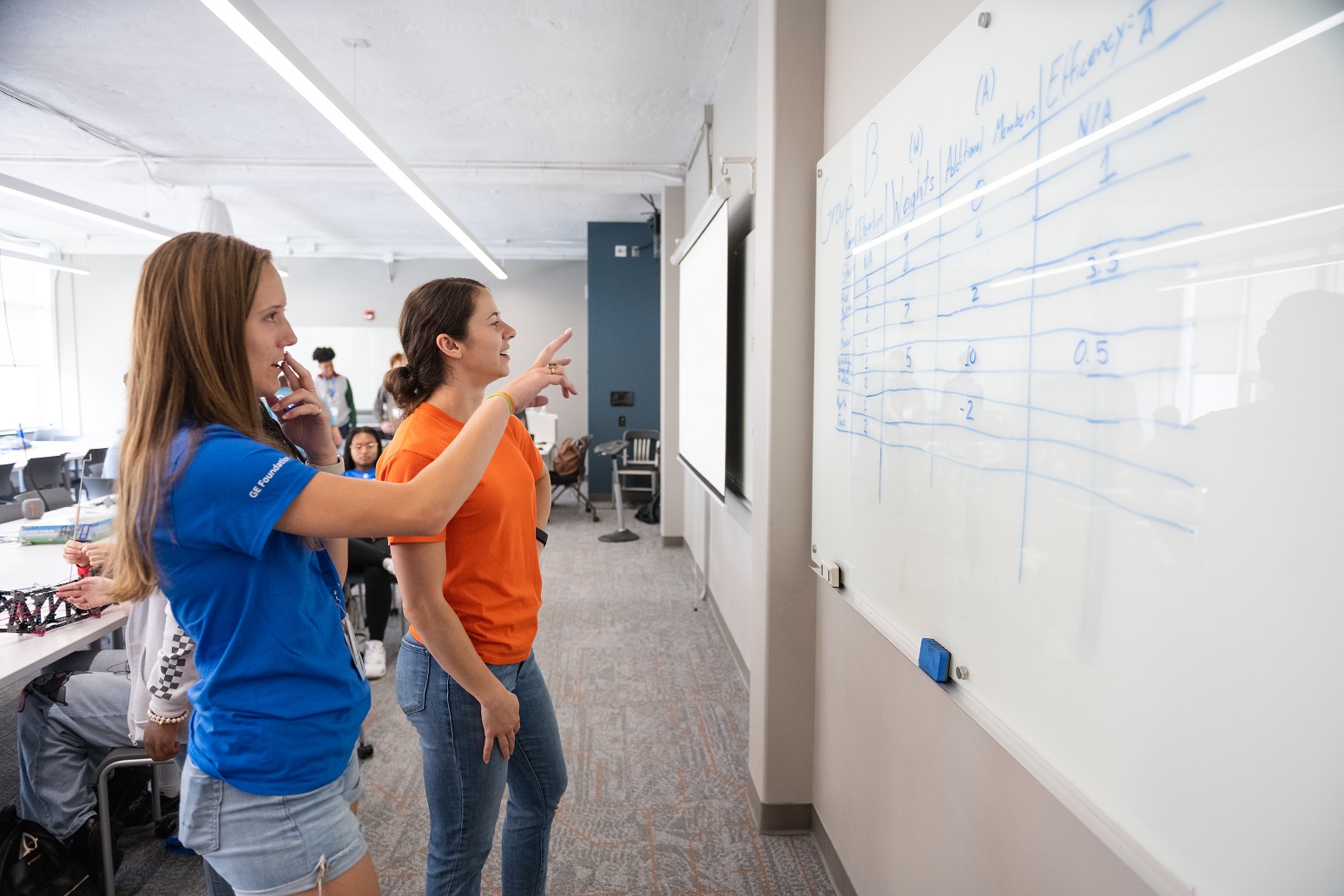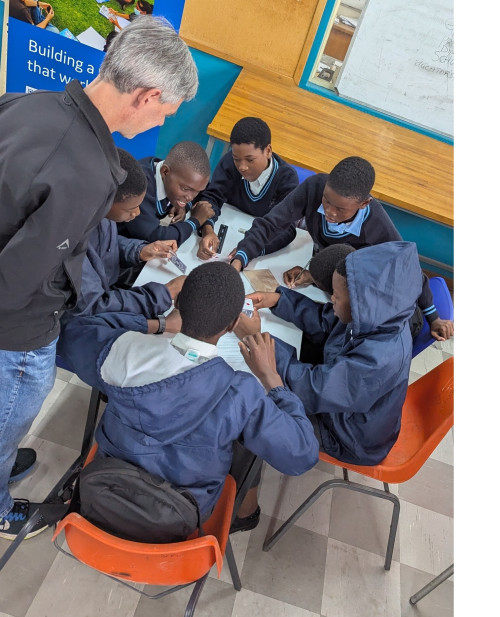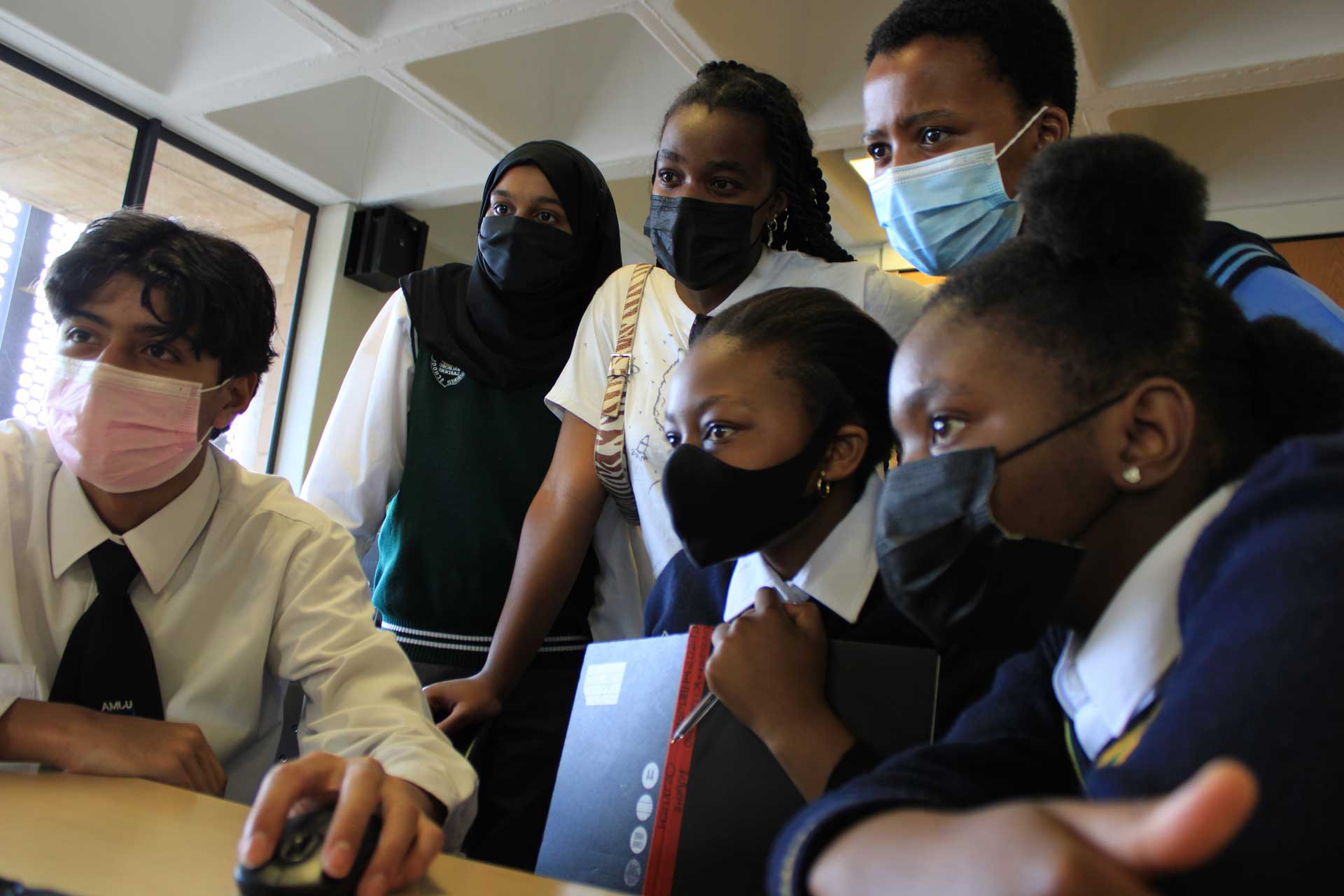Cincinnati, OH
When students at Lockland high school in Cincinnati, Ohio, hear that the Next Engineers: Engineering Discovery team is visiting, the excitement is palpable. “If there’s any adult in the building, they ask me if there are GE [Aerospace] people here,” says Melissa Schowalter, a science teacher with over a decade of experience. “They love it. They’re so excited.”
That excitement is a spark that ignites curiosity, builds confidence, and opens doors. Engineering Discovery brings live demonstrations and hands-on engineering experiences into classrooms, but its impact stretches far beyond the activities themselves. It transforms how students see themselves – and how schools see what’s possible.
For students, the program is often their first real glimpse into the world of engineering. “We can say ‘STEM’ a hundred thousand times,” Schowalter explains, “but I feel like just twice a year, with Next Engineers coming and explaining what an engineer does – the students understand what engineering is.”
Whether it’s building a windmill that can lift tea bags or constructing a weight-bearing tower from playing cards, the activities are designed to be accessible, engaging, and empowering.
But the benefits don’t stop with the students. Teachers, too, gain new insights into how they might make science and engineering more engaging for their students. “They’ve taught me that I can do hands-on, group activities for way cheaper than I thought,” Schowalter says. “It doesn’t have to be super expensive.” The program has inspired her to incorporate more real-world references into her lessons, using the leftover windmills and towers as teaching tools to tie her lessons to concrete examples.
Staffordshire, UK
Across the ocean at Staffordshire, UK’s Blessed William Howard School's Head of Science Laura Harris echoes this sentiment. “Next Engineers has been a game changer for us,” she says. “The quality of the experience is so good.” The program, which has been running at Blessed William Howard since 2021, allows all the school’s students to participate. “Being able to offer these experiences to everybody because they’re funded definitely benefits these students. If it was paid, their parents wouldn’t be able to consider it. The fact that it’s inclusive of everybody really is game changing.”
Harris shares that she’s seen a shift in the school’s culture, encouraging more students, especially girls, to pursue A-levels in physics and consider engineering careers. “We are seeing a lot more of our students proportionally continue on to A-levels, particularly physics, with girls in particular openly expressing that they want to pursue engineering.”
The ripple effects are real. Teachers report feeling more confident linking classroom content to engineering careers. Students who previously struggled to focus are now “proud as punch” after succeeding in challenges like Toxic Popcorn or Critical Load, which require teamwork and creativity to solve. And for many, Engineering Discovery is their first exposure to university or professional role models who look like them, speak like them, and share their interests.
Johannesburg, South Africa
In Johannesburg, the impact of Engineering Discovery is equally profound. At Curtis Nkondo School of Specialization, Principal Lindiwe Ndzala sees the program as a catalyst for clarity and ambition. “It removes the boundaries,” says Ndzala. “With this program, it takes them out of basic careers and it’s saying to learners, ‘you can dream bigger.’”
“Right from Grade 8, it builds up interest for their Grade 10 subjects, where they have to choose,” she explains. For many students, Engineering Discovery is the first time they see science not as abstract theory, but as a path to real-world possibilities. “The subjects are no longer theoretical – they know the value,” Ndzala adds.
“Even as a teacher, I’ve learned,” Makgobelele Tshepiso Mapula, an educator from Eqinisweni School shared. “It encourages me, since I’m teaching science, to also demonstrate things.”
This shift in teaching practice is echoed by Babalwa Mdyogolo at Far North Secondary, who recalls the joy sparked by a simple cornstarch and water experiment demonstrating non-Newtonian fluids: “They were very excited, surprised by the demonstrations. As teachers, we were also looking at the way the presenters engaged with the learners.” For these educators, Engineering Discovery is not just a student experience. It’s a professional development opportunity that reinvigorates their own approach to science education.
Ultimately, Engineering Discovery is doing more than sparking interest in STEM. It’s helping build an ecosystem where students, teachers, and communities grow together. From Cincinnati to Johannesburg, these programs are part of a larger movement to equip young people with the tools, confidence, and vision to shape the future. As one educator put it, “they know what they want” – and that clarity is powerful. We are growing the next generation of leaders who will drive our companies, fuel our innovation, and shape our country’s future. And we’re doing it by showing students that their ideas matter, their potential is real, and their dreams are worth building.


